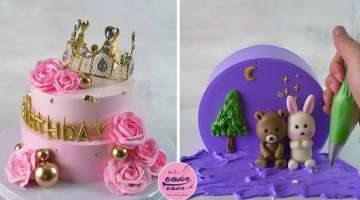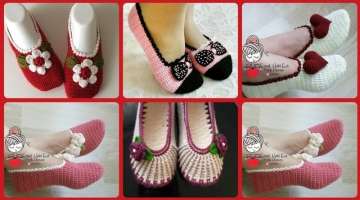Meet Gimo, The Cat With The Biggest Eyes Ever(video)
Prepare to have your heart melted. Remember a Scottish fold cat called Gimo that we shared a few days ago? Of course, you do! He’s impossible to forget once you’ve seen him. And if you haven’t yet been acquainted with this impossibly cute cat then take a look at the pictures below to see what all the fuzz (sorry) is about.
- 1 | 16

Whether the Scottish fold cat is standing on his back legs, preparing to pounce from a secret location, casually sitting in a cardboard box or simply staring at you with his big-eyed kisser, Gimo does everything with a level of cuteness that puts normal cats to shame. In fact, he could even teach classes on the art of being a cute black cat. But he'd have to teach them in the day because you just wouldn't see the black cat at night. Except for his eyes that is. Those big, round, mesmerizing eyes. Don't look at them for too long. If you do, you might never escape.
- 2 | 16

ALL ABOUT SCOTTISH FOLD CATS Scottish Fold Basics: All Scottish Folds descend from Susie, a barn cat from the 1960s who boasted folded-down ears in Perth and Kinross, Scotland. The Scottish Fold's ears were so unique, fanciers decided they needed to be pedigreed. There is also a longhaired version of this breed, which some associations credit differnetly as the Highland Fold or the Longhair Fold. The mutation for polydactylism can spontaneously occur in any cat breed. The lifespan of a Scottish Fold is around 12-15 years.
- 3 | 16

History of the Scottish Fold: The first Scottish fold was a barn cat named Susie, discovered on a farm in Perthshire, Scotland, in 1961. She had a natural mutation for folded ears, which she passed on to half of her kittens. Neighboring farmer William Ross began breeding the kittens, consulting with a geneticist. Sadly, Susie died after getting hit by a car, but her daughter Snooks went on to perpetuate her line.
- 4 | 16

Scottish fold kittens are not born with folded ears. The ears of the kittens that carry the gene begin folding usually about the 21st day, starting with the outer edge of the ear near the base. The fold gene is an incomplete autosomal dominant gene that affects the development of cartilage and bone throughout the cat's body.1 It is not sex-linked.
- 5 | 16

Cats that have one copy of the gene are said to be heterozygous. These should display the folded ear characteristic. They may develop arthritis but usually will do so at an older age. There is controversy as to whether these cats have a good quality of life or whether they are prone to pain and disability. These cats with folded ears are bred to cats that do not display the folded ear trait to ensure none of the litter receive two copies of the gene. It is best not to breed a heterozygous Scottish fold with a Scottish fold that had straight ears, but instead to outbreed with a British shorthair. The concern is that Scottish folds that have straight ears may still have the gene but not express it.
- 6 | 16

The distinguishing characteristic of the Scottish fold cat is its small ears which fold forward and downward, giving it an impish look. Sweet-tempered and attentive, devoted, but not demanding, the fold makes a perfect pet. As the fold is outcrossed with both American and British shorthair cats, think of it as having a "British sense of decorum along with an American sense of self-confidence," according to The International Scottish Fold Association.
- 7 | 16

The Scottish fold cat is not to be confused with the American curl, which also has folded ears. The difference will be immediately noticeable, an American curl's ears curl upwards and back as opposed to the Scottish fold's ears which fold forward. Why are Scottish Fold cats banned? Flanders is banning Scottish fold cats. Starting 1 January the breeding and selling of this breed of cat will be prohibited. The ban is being introduced because the animals may develop serious health problems as a result of a gene that they are carriers of. The cat so beloved of the American singer Taylor Swift has folded ears as a result of a genetic defect. The animals may look like treasures but the faulty gene can trigger serious health issues for the poor creatures.
- 8 | 16

Marc De Rijcke from Kasterlee (Antwerp) breeds Scottish folds and is incandescent about the decision taken by Flemish animal welfare minister Ben Weyts (Flemish nationalist): "I've been breeding Scottish folds here for three decades and in all this time only three or four pussies have developed minor problems in the tail. The gene is a natural mutation. Scottish folds can live to up to 16 years without developing any problems. Once upon a time two kittens with folded ears were born in Scotland. One survived and it was the start of the breed. You should always mate a Scottish fold with a British shorthair. Then the gene isn't effective. Not all kittens will be Scottish folds. Only after three weeks will some kittens develop folded ears. All are born with straight ears."
- 9 | 16

Vet Louise Mollaert of veterinary body Savab has welcomed the Flemish minister's decision. She says breeding on the basis of genetic faults can have big ramifications for the well-being of the animals: "The fault is in the cartilage. Cartilage occurs everywhere and Scottish folds will develop problems like lameness".
- 10 | 16

Not All Scottish Fold Cats Have the Trademark Ears. Although this might be a bit surprising, it is certainly true. All Scottish Fold kittens are coincidentally born with straight ears, and around 3-4 weeks of age kittens will start to develop the fold in their ear. For those kittens whose ears do not bend, they are referred to as "Straights." There is a natural gene mutation which causes the fold in the cat's cartilage. Aside from Straights, the Scottish Fold also comes in both longhair and shorthair varieties.
- 11 | 16

They Are A Quiet Breed. These quiet cats are known for being very soft spoken, and when they do meow, it is a sweet, soft sound that isn't very loud. You will rarely find one that is overly chatty. Fun fact: Before they were referred to as the Scottish Fold, these cats were known as "Flops" due to their signature ear shape.
- 12 | 16

The Scottish Fold is Easy Peasy. This breed is easy-going and doesn't get bothered by much. They do well in homes with children, and they have a desire to be with or near their owners at almost all times. Because of their laid-back nature they are social cats who get along great with other cats and pets in the household. The Scottish Fold thrives on interaction with others and wouldn't do well in an environment where they weren't given the attention they need.
- 13 | 16

These Cats Love to Entertain. Different from other shy, loner cat breeds that prefer their privacy and solitude, the Scottish Fold loves to entertain their humans with their goofy antics. These cats are overly curious by nature, and although they may not be loud, they have a need for play and entertainment. Because of their outgoing personality, this breed can win over even non-cat lovers.
- 14 | 16

They Even Have a Signature Pose. These funny cats are known to fall asleep fast on their back, and even have a preferred sitting position known as "the Buddha" with their legs spread wide and sitting up right. It might look rather funny, but to these goofy cats, they like being comfortable and are fond of getting a few laughs for their quirky behavior.
- 15 | 16

Fun fact: Although many breeds lineages cannot be directly traced, the exact origin of the Scottish Fold can be directly linked back to a white barn cat named Susie with unusually folded ears. Susie, the first of the breed, lived in Scotland in a region known as Tayside back during the 1960's. If you're looking for a cool cat that loves to be near, with about the cutest little ears you've ever seen, the Scottish Fold may be just the cat breed for you!
- 16 | 16

More Cat Breeds and Further Research. Before you decide whether a Scottish fold is the right cat breed for you, do your research. Talk to Scottish fold owners, reputable breeders, veterinarians, and rescue organizations. More info: Instagram (h/t: lovemeow)



















